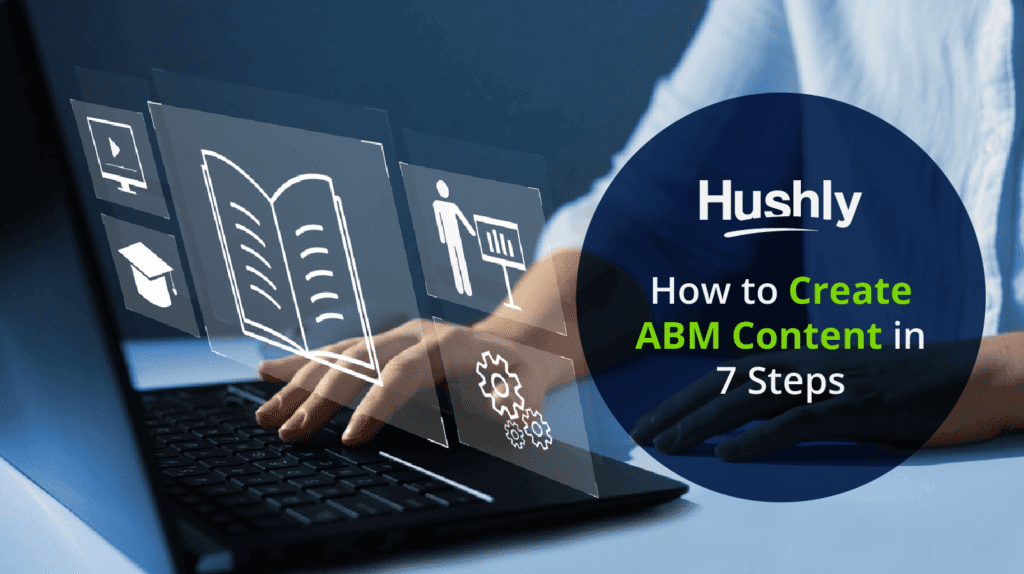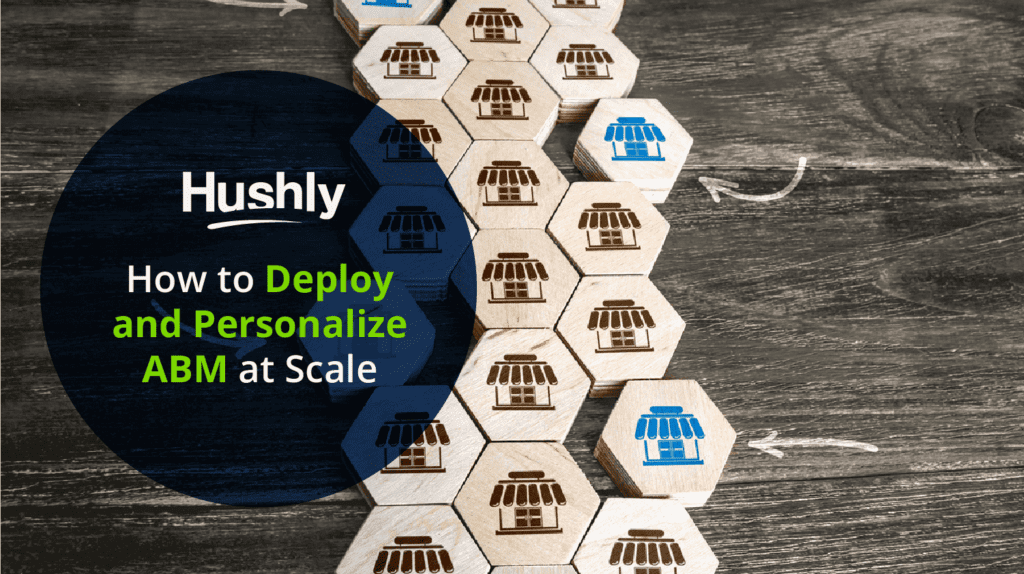Filters
Content Type
Topic
How to Create ABM Content in 7 Steps
Creating personalized ABM content has never been more important for B2B marketers.
Hushly advocates for in-depth account-based marketing, which means spending a lot of time and effort crafting bespoke marketing campaigns for ideal buyers that your company dreams of working with.
This time and effort can seem daunting, but there are some surefire steps you can follow that will streamline the process and make it easy to learn how to build an ABM strategy.
You should start by identifying your ideal companies, and who within those companies you’ll need to convince to close the deal. Then, personalizing content for these buyers, determining the right content channel, and tracking the performance of that content will be your main goals.
As you learn each of these steps more in depth, your ABM content marketing process will become easier and easier.
Start by putting together a list of companies you’d love to form a relationship with.

1. Target Your Ideal Companies
The first step in creating ABM content is to identify who you’re making the content for.
This should begin with a process of identifying a large number of potential target accounts. These potential targets should represent a range of companies, from the largest and most desirable accounts to smaller accounts that will take less time but yield less revenue.
Proceed by categorizing these potential accounts according to the criteria you’ve defined. Aim for a tier system that you can easily sort companies into and that will provide quick insights to sales and marketing teams.
At the top of the tier list should be those companies for whom you’ll spend the most time developing bespoke marketing campaigns and content. At the bottom of the tier list will be companies for whom you’ll still rely on more traditional 1:many marketing strategies.
2. Identify Key Personas
The next step is to find out who in these organizations has the authority to buy. This step matters a great deal because the whole point of ABM is to design personalized and targeted advertising. Knowing who you’re speaking to is a crucial part of this.
Part of the process of organizing your target companies into their tiers should include evaluating the accessibility of those in charge of buying decisions. Existing relationships, the length of sales cycles, and expected lifetime value are key factors when determining your ideal buyers.
3. Strategize for New Target Accounts
Once you’ve identified your target companies and who you’ll be speaking with, it’s time to determine your ABM tactics. To do this, ask yourself a few questions about your ideal buyers.
- Who is your persona and who will they be consulting with to make their decision?
- What can they gain by choosing to work with you?
- How will they justify their decision to higher-ups?
- Is there anyone in their organization on your side that can leverage their position to help you close the deal?
Forming a relationship with your buyer is a key part of account-based marketing. Learn what the buyer likes, what goals they have personally, and how they hope to benefit their company. Knowing this information will make designing content for them much simpler.
4. Personalize Content
Now that you’ve established an ABM playbook, you can begin the process of designing personalized content around it.
When crafting content, remember that you’re speaking to a human being. Use the information from the previous step to develop a unique voice for that client that speaks to their unique needs.
Don’t be afraid to be too specific. Speak directly to what the buyer needs, wants, and hopes to achieve. Most importantly, focus on why your company is well positioned to help them achieve their own personal goals as well as benefit their organization.
5. Create Omnichannel Content
Your content should reach your buyer where they are.
B2B buyers research more extensively and engage through more channels than ever before. Your content should meet them at any time and in any format they prefer.
Try to create content that meets the definition of omnichannel. This means:
- Written Content: Blogs, email campaigns, case studies, and similar types should be consistent with your brand messaging and targeted to the buyer.
- Media: Each type of content like video, social media, and podcasts has its own strengths and weaknesses. Make sure the themes of the content are appropriate for the channel they’re on.
- Images: Imagery, including infographics, banners, and website ads, are critical. They’re the fastest way to gain someone’s attention and wow them with some interesting bit of personalization.
- Personalized Web Assets: You should focus on designing personalized landing pages and dynamic webpages that automatically change based on who is visiting. Creating custom microsites or webpages for unique customers is an easy way to stand out from your competition.
Ultimately, the best type of content will depend on your persona. Hopefully, during the process of identifying your buyer and researching them, the best type of content to reach them will become apparent. In any case, focusing on casting a wide net by creating omnichannel content should cover any base.
6. Update or Remove Existing Content
One of the most useful account-based marketing steps is to frequently review your content for possible updates, removals, and remakes.
Customers expect up-to-date information and content, regardless of what form it takes. Take the time to go through your content archives and figure out what’s still relevant, what needs an update, and if anything needs to be cut entirely.
A regular “content cull” can serve as a controlled burn and clear the deadwood away from your marketing operation, keeping it clean, up-to-date, and relevant for any potential buyer that happens across it.
Reviewing old content is also a great way to farm ideas for new content, making it easier to have a steady stream of updated content to entertain and educate buyers.
7. Try a Content Experience Platform Like Hushly
The easiest way to create and maintain ABM content is to use a platform like Hushly’s.
Hushly specializes in creating state-of-the-art ABM content on all channels. We believe in the principle of providing value upfront, gaining the trust of buyers, and building relationships based on that trust.
Hushly can help you:
- Create self-nurturing landing pages and dynamic webpages that dynamically display different assets and marketing information based on visitor information.
- Craft custom ABM email campaigns that will target buyers and speak to them on a personal level.
- Create adaptive content hubs which also display unique information based on visitors. These content hubs are like rabbit holes of information for your buyers to dive into.
- Keep track of data and use it to optimize your ABM content experience from top to bottom.
Bonus Tip: Evaluate Content Based on Performance
Keeping track of how well your content is performing will provide some valuable insight. Namely, what types of content does your audience respond best to and how can you continue to reach new customers with that same message?
By identifying which content is working, and which content isn’t, you’ll make the task of coming up with new account-based marketing ideas easy and scalable.
Your ability to create engaging and effective ABM content will depend on the time and resources your company invests in the effort. In short, you get out what you put in.
For marketers in small and medium-sized businesses who are unsure they can manage the added expense required for true ABM, Hushly is here to help.
Learn how Hushly can manage your ABM content for you to maximize your marketing efforts.
The post How to Create ABM Content in 7 Steps appeared first on Hushly.



